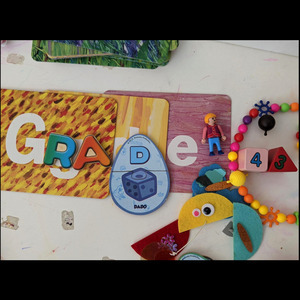For about a year or two, modes have been bugging me. What to make of them, and do I need them to play amazing guitar. I think the answer might be…no. And if you really need to learn modes, you will probably know you do. Like if you are in a jazz band and the people tell you to do a Dorian Vamp or something (more on that below).
So I’m going to try to share how I understand modes, and why you might want to learn them, but only if you really want to.
Some additional minor preamble
Music theory is a way to explain music that’s already been created, and perhaps, just perhaps, can provide some new ideas for you to try. There is no right or wrong music. That’s up to the author and listener to decide. Music theory provides a language to describe what is happening musically - rhythm, melody, and harmony
What is a mode?
If you are like me - you were taught that modes are scales created by starting the Major scale (and other scales) at each diatonic position. What does that mean?
Take G Major. The notes that make up that scale are G A B C D E F#
To create modes you do the following:
G A B C D E F# gives you G ionian
A B C D E F# G gives you A dorian
B C D E F# G A gives you B phrygian
And you do this for each of the degrees (or diatonic positions) of the G major scale.
While this is correct when speaking about how they are created. It actually gives you zero insight into how they are used. I have come to realize that modes are really just their own scales, and with that, can suggest chords, and as a consequence harmonies. When I organize musical theory in my mind, I think in terms of most simple to complex:
Notes: describe just that single notes
Intervals: **describe the relationship between two notes
**Triads: **describe the relationship between three notes
**4 note chords: describe, well you get it.
After 4 note chords, then we generally start getting into scales (even though you may have 5 or 6 note chords too)
Pentatonic scales: generally major or minor. Made up of 5 notes
Hexatonic scales: have 6 notes.
Major, minor, modes, etc: are 7 note scales. They have their own chords associated with them which in turn can suggest particular chord progressions (harmony)
So now I’ll try to explain how you might use modes so you can better understand what I mean. You can spend a lot of time performing analysis of songs. There are some great videos if you want to really nerd out and hear the theoretical explanations of some really great music.
How I generally apply my knowledge of modes
To figure out what notes make sense for a solo over a given chord progression
There are many ways to decide what notes to play over a solo. Many a book have been written on the topic. Here I’m just going for a very basic approach you can use for harmonic analysis.
Let’s look at a simple vamp: | Gm | C7 |
So what do you play over that? Let’s look at some options:
G minor pentatonic
G minor pentatonic + C major pentatonic
G minor and C7 chord tones
Mix of all of those
G dorian
Why not the natural G minor? Cause that would have Eb instead of E and it doesn’t quite sit right very easily
When I’m soloing, I want to think about as few things as possible. For me, in this particular case Dorian handles all of that well. In other cases it might be easier for me to think in terms of pentatonic and chord shapes.
You’ll also notice I started to play more notes cause I felt like I had to. That’s why I might even start with one of the more “simple” scales and move my way up.
To spice up a solo
Some chord progressions are more simple than others. Let’s say you have a vamp that’s over a single chord. Now you can play a lot of things:
Pentatonic
Chord tones
And since it’s a single chord - you actually have a lot of options. Without getting too in the weeds, there are 3 minor modes:
Dorian
Aeolian
Phrygian
And they all work over a minor chord. Does that mean it works over any minor chord at any time? Probably not. Remember that modes also imply harmony, and so when you have more than a single chord playing, you have to be more careful about what you play.
To try something new
Modes can be a way to inject some new ideas in your playing (any new musical theory that you may want to explore)
Simple example. A I IV vamp. Here’s what you get for each I IV vamp with a mode
C Ionian: Cmaj7 Fmaj7
C dorian: Cmin7 F7
C Phyrgian: Cmin7 Fmin7
C Lydian: Cmaj7 F#min7b5
C Mixolydian: C7 Fmaj7
C Aeolian: Cmin7 Fmin7
C Locrian: Cmin7b5 Fmin7
My summary: modes are cool. Mostly if you want to nerd out. You’ll probably know if you really need to learn them. You don’t need them to be an amazing guitarist.
